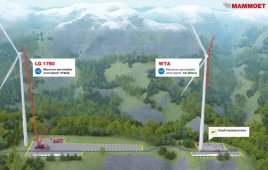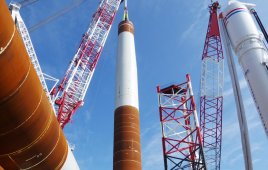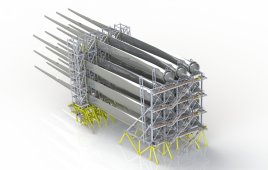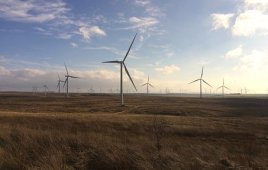The most volatile timeframe for something “bad” to happen in a project’s lifecycle is during construction, which makes securing proper builder’s risk coverage extremely important. Builder’s risk coverage is protection for equipment and materials that will become part of a final project up to the Commercial Operation Date (COD). Such coverage includes turbines, foundation, transmission, substation, balance of plant, and more.
There are two ways to secure a builder’s risk policy: One is to pass the risk and expense onto the Engineering, Procurement, and Construction (EPC) contractor, or let the project owner bear the risk and expense. At first glance, passing this exposure on to the EPC contractor may seem most cost-effective. But doing so is often actually more expensive and may expose the project owner to uncovered risk.
When the contractor provides the builder’s risk for a project, that cost ultimately gets passed on to the project owner because the premium associated with purchasing the builder’s risk and the deductible risk must be accounted for. Often, part or all of the contractor’s potential deductible exposure is built into the final cost of the builder’s risk and overall construction agreement.
Another concern with having the EPC secure builder’s risk involves coverage unknowns. The wind industry is a unique world that demands unique coverages not always found or offered in general builder’s risk policies. Several must-haves are on every wind-project builder’s risk:
Start-up coverage: This is protection for loss of production revenue due to a covered loss and postponing the project’s commissioning date. Because of the nature of the wind industry and the specialized components associated with a wind farm, finding replacement components in a timely manner can be extremely difficult. For example, take a typical 150-MW wind farm that produces $35,000,000 annually. All of the turbines have been erected and the commissioning is well underway. A week before the keys are turned over and COD has been reached, the substation transformer is struck by lightning. It is determined that the substation transformer has to be replaced, but the lead time for the next available unit is eight months. In this scenario, the expense for the project’s loss of production is roughly $23,000,000.
Non-production soft costs: Within the previous claim there are other, non-production expenses associated with such a loss. For project owners to save themselves from drowning in additional costs, they should ensure their builder’s risk includes extended financing charges and interest for the construction loan, as well as legal and accounting fees associated with the delay of the loan closing.
Equipment breakdown and testing or commissioning coverage: With thousands of moving parts, turbines are complex and sometimes fickle pieces of equipment, especially when energized for the first time. There is little risk of some internal component not having enough grease or ceasing up in a turbine’s second or third year. But the risk greatly increases when components are energized during the start-up and commissioning phase.
Navigating a wind project’s construction is a challenging and daunting task, but a proper builder’s risk policy can safeguard against many unknown exposures and potential losses of a project. It is important for owners to partner with an experienced wind-industry risk manager who can help navigate through the builder’s risk cloud and insure their wind investment is adequately protected. WPE
 By: TJ Rolfing, Account Executive, Holmes Murphy & Associates, www.holmesmurphy.com/renewable-energy
By: TJ Rolfing, Account Executive, Holmes Murphy & Associates, www.holmesmurphy.com/renewable-energy
(This is Part 2 of the column featured in the November 2011 issue of WPE&D http://tinyurl.com/tjrolfing)
Filed Under: Construction, Insurance




